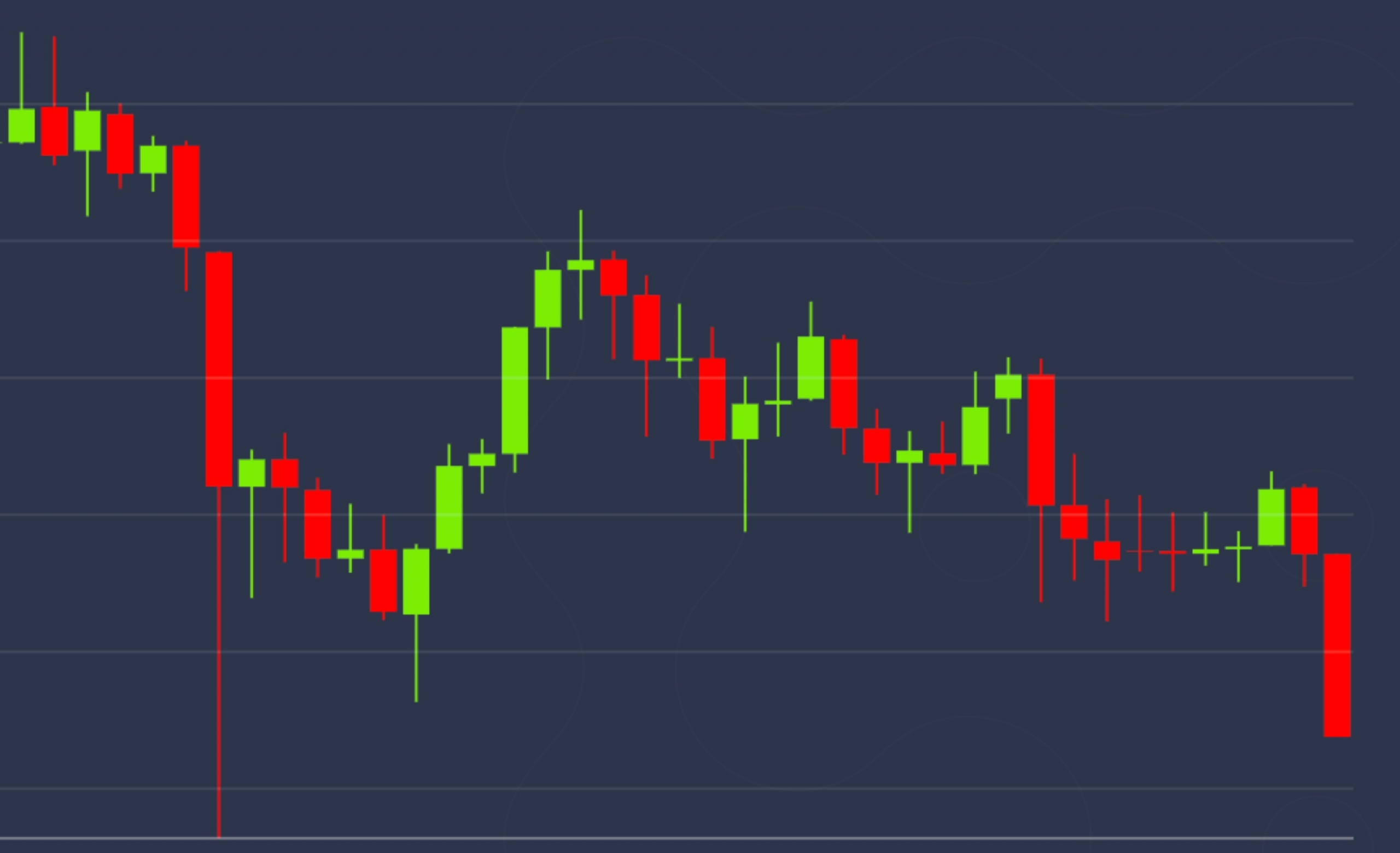Crypto Code Commits Remain Near All-Time Highs, Despite Price Declines

The Takeaway:
- According to a new report from Electric Capital, open-source crypto projects have lost developers, but thanks to the industry’s most committed technologists, total activity has stayed relatively constant since the late-2017 boom.
- Lower-market-cap crypto projects have lost the most developers, while promising sectors like decentralized finance and infrastructure projects have been gaining them.
- Throughout 2019, roughly 2,450 developers have pushed code on 10 or more days per month. The total population of these highly committed developers is up 13 percent.
- Even as market caps went down, year-over-year growth rates among developers never dropped below zero.
The least committed contributors were the first to leave as cryptocurrency market caps went south.
That’s the main finding from Electric Capital’s second “Developer Report,” which was published Monday. The report analyzes code activity in all the open-source repositories in crypto and follows the venture capital firm’s first such report from March.
While there’s a sense that protocols and projects have been losing code contributors, the majority of developers that left crypto during the market correction in the first half of 2019 (77 percent of them) were the least committed contributors to the least promising projects.
Meanwhile, total commits really haven’t gone down.
“The mystery we’re really trying to unravel here is why commits have stayed very, very consistent through crypto winter even though high-level developers have decreased,” Maria Shen, who leads data science for Electric Capital, told CoinDesk in a phone call.
In fact, Electric found that most of the total losses in developers were those doing the least amount of work. Meanwhile, more consistently contributing developers have kept the overall contributions consistent even as the developer total shrank.
 Year-over-year code commits. (Chart courtesy of Electric Capital)
Year-over-year code commits. (Chart courtesy of Electric Capital)Electric Capital’s research spanned over 27,000 code repositories, with additional work added in to cull duplicate entries and low-level contributions that tend to inflate real developer activity. The researchers also de-duplicated developers who contributed to more than one project, though by and large, these were rare.
The principal insight, according to Electric Capital, came in dividing developers into three groups:
- one-time (those who only committed code one day per month),
- part-time (those who committed two to nine days per month)
- and full-time (those who committed 10 or more days per month).
The top 100 projects lost only 4 percent of their total developers while the rest lost 19 percent. Across the board, the less often a developer made commits, the more likely they were to quit making contributions.
Nevertheless, monthly commits into the code base in 2019 never dropped below the levels seen in the early part of 2017’s crypto boom, in no small part because the total number of developers contributing on 10 or more days each month has ticked up slightly, ending at 2,455 in June 2019.
“It’s a useful breakdown to keep track of since the total number of developers declining doesn’t tell the full story,” Linda Xie of Scalar Capital told CoinDesk.
“Fifty percent of the drop [in total developers] is from people who committed one commit in a month. That for me was a key takeaway of the data,” Avichal Garg, co-founder of Electric, told CoinDesk.
More importantly, the team notes that market downturns among the major blockchains over the last year only served to slow the accumulation of part-time and full-time developers. New developers continued to join the top 100 projects, though at a slower pace when prices were down.
Which means that, if crypto really is at the beginning of an upturn, “way more developers should rush in over the next two or three years,” Garg said.
It’s also important to note that there are a number of early projects out there (such as Near, Coda and Oasis) that have not yet posted their code into open repositories, so there could be some undercounting. Nevertheless, Electric believes its data is “directionally” informative.
Further, it’s also worth noting that the analysis made efforts to include any project that’s contributing to a given blockchain, not just direct commits to the underlying protocol (such as applications and infrastructure efforts that aren’t directly in the core code).
 Percentage change in monthly average developers. (Chart courtesy of Electric Capital)
Percentage change in monthly average developers. (Chart courtesy of Electric Capital)Key data points
With 100 pages primarily devoted to graphs and charts, there is a lot of information to glean from studying this report.
Here are a few points that stood out:
- Ethereum on top: Of all the developers evaluated in this analysis, 18 percent worked on ethereum, which continues to have the largest contributor base (the second strongest is bitcoin).
- Up-and-comers: The next three largest developer communities were EOS, Cardano and Monero, in that order.
- Money isn’t everything: Litecoin and Dogecoin all have more than $100 million in daily transaction volume, but less than six developers on average per month. Meanwhile, Stellar, Tron, Maker, BAT, Aeternity, Waves, Tezos and Status have more than 40 on average but come in at less than $100 million in daily volume.
- Trends in loss: Developers are primarily leaving the blockchains that aren’t in the top 100 by market capitalization. They are also gravitating to infrastructure work and decentralized finance, at the expense of other applications and blockchains oriented around money.
- The long tail is still long: Nevertheless, there are still 583 ecosystems that have seen at least two developers at work over the last six months; 748 had at least one sustained developer.
- Code is sticky: Smart-contract blockchains are losing occasional contributors but gaining full-timers.
- Best winner and worst loser: Among the projects that averaged more than 40 developers, Maker gained the most and EOS lost the most, in numerical terms.
- How to win devs and influence crypto: A well designed testnet launch can be a great way to market a blockchain to developers looking for a place to contribute. Electric found major upticks around these efforts. Shen pointed in particular to Cosmos’s “Game of Stakes” as a standout success.
 Testnets drive engagement. (Chart courtesy of Electric Capital)
Testnets drive engagement. (Chart courtesy of Electric Capital)Why this information matters
“Developers who have been really building in the ecosystem have continued to build,” Shen said, “and these ecosystems are incredibly strong.”
Broadly speaking, Garg argues that this report’s findings are encouraging for the whole ecosystem. Tactically, he said, this kind of work helps his company identify projects that are neglected by the broader investment community.
Further, he said there have been some industry-wide assumptions that this research supports with real data. For example, that decentralized finance is attracting a lot of interest and that the very low-quality projects from the initial coin offering (ICO) boom are stagnating or dying.
“This data is generally valuable for everyone to quantify these intuitions we all have,” Garg said.
 Developer contributions over time. Used by permission. (Chart courtesy of Electric Capital)
Developer contributions over time. Used by permission. (Chart courtesy of Electric Capital)Garg also pointed to some surprises in the data.
For example, that Grin’s developer community has held on despite waning interest in crypto more broadly. Additionally, that EOS did well at attracting committed developers, despite meeting general skepticism across the industry.
Critically, Garg said, across the history of the technology industry, engineers are a leading indicator of winning companies and dominant software. That’s why Apple, Facebook, Google and Microsoft all fight so fiercely to attract and retain talent. He believes the same will prove to be true in crypto.
Said Garg:
“Where the developers aggregate, that’s where value aggregates.”
Electric Capital co-founder Avichal Garg speaks at Consensus 2019 (photo via CoinDesk archives)









